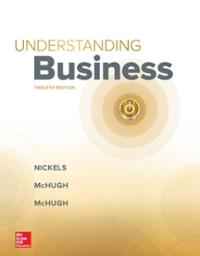Question
Small Batch Artisan Rye Bread General Info This activity is about a small baker that sells a very specific, hard to make (it takes 3
Small Batch Artisan Rye Bread
General Info
This activity is about a small baker that sells a very specific, hard to make (it takes 3 days), dense, and very nutritious rye bread.It is made with very few ingredients (see below).The bread cannot be stored because it deteriorates in quality very quickly like many fresh baked breads.
The baker sells this bread to restaurants and delis in their city; not to the public directly.
Current price of a loaf is $6.95.
Costs
The baker owns (free of mortgage) the facility where the majority of the bread is baked, which doubles as the baker's home (i.e., lives in a loft above the facility).All the equipment in this facility was inherited from the family and has essentially zero value on the open market, but it works really well and is fully capable of handling the current level of production - EXCEPT IN ONE MONTH (JULY) (more info below).This facility can handle production of 10,000 loaves per month.If the baker needs to produce more than 10,000 loaves, they must rent a nearby facility.
This nearby facility is fully equipped and can handle an additional 7,000 loaves per month.HOWEVER, the owner of the rental facility will not do a month-to-month lease.It must be rented for a minimum of 3 consecutive months at a time.It costs $7,000 per month to rent.
Labor costs:$80,000 of labor costs are salaried employees.The rest of the labor cost was hourly depending on volume of business.
The baker considers overhead is a fixed cost.
Currently the baker looks at total cost divided by number of loaves sold to calculate per unit profitability.You have looked at the baker's costs already.
Information on Sales volumes
Here's the current monthly sales in loaves of bread
Month Sales
January 8000
February 8000
March 8000
April 8000
May 8000
June 8000
July 17000
August 8000
September 8000
October 8000
November 8000
December 8000
Annual 105000
The baker also provides you with the following "heuristically determined" price & quantity schedules.
March
Price Volume
6.95 8,000
6.75 10,000
6.55 12,000
6.45 12,500
6.00 15,000
5.85 15,300
5.70 15,500
NOTE:In March, the 2nd facility IS available for rent, but has to be rented for the 1st quarter and January & February sales don't seem to be tremendously sensitive to changes in price.
NOTE 2:August and March have similar customer preferences.
Here's July price & quantity schedule.
July
Price Volume
7.55 8,000
7.45 10,000
7.35 10,500
7.25 12,000
7.15 13,500
7.05 15,000
6.95 17,000
During discussions, the baker says, "...I think that January & February might be like March.I haven't really tested them."
The rest of the months do not seem to be sensitive to price changes and the baker likes the $6.95 price in those months.
Your "Consulting" Job
You are a friend of this baker who asks you to help them out with their business, specifically pricing of their bread.
1. In general, what is the best way to price the bread?Are they considering the correct costs when deciding how to price the bread?
2. Should the baker consider different prices in different months?Obviously, July is one that they should consider.BTW: What is the economic phenomenon that accounts for what's going in July?
3. Remember also that according to the baker, March and August sales seem sensitive to pricing.
a. Suggest the appropriate price per loaf in March
b. Suggest the appropriate price per loaf in August
c. Finally, any ideas about January & February prices?
NOTES:
1)The price can vary from month to month.
2)Make sure to consider ALL the relevant costs associated with these pricing decisions.
3)Make sure to consider the two pricing conditions that we have discussed often in class
a. The markup condition (i.e. the relationship between price and marginal cost)
b.The margin condition (i.e. the relationship between price and average total cost)
The corresponding excel spread sheet:
https://drive.google.com/file/d/1SrqPIL_PmQ41LYMaR5iqfDwh_EQwShrz/view?usp=sharing
Step by Step Solution
There are 3 Steps involved in it
Step: 1

Get Instant Access to Expert-Tailored Solutions
See step-by-step solutions with expert insights and AI powered tools for academic success
Step: 2

Step: 3

Ace Your Homework with AI
Get the answers you need in no time with our AI-driven, step-by-step assistance
Get Started


